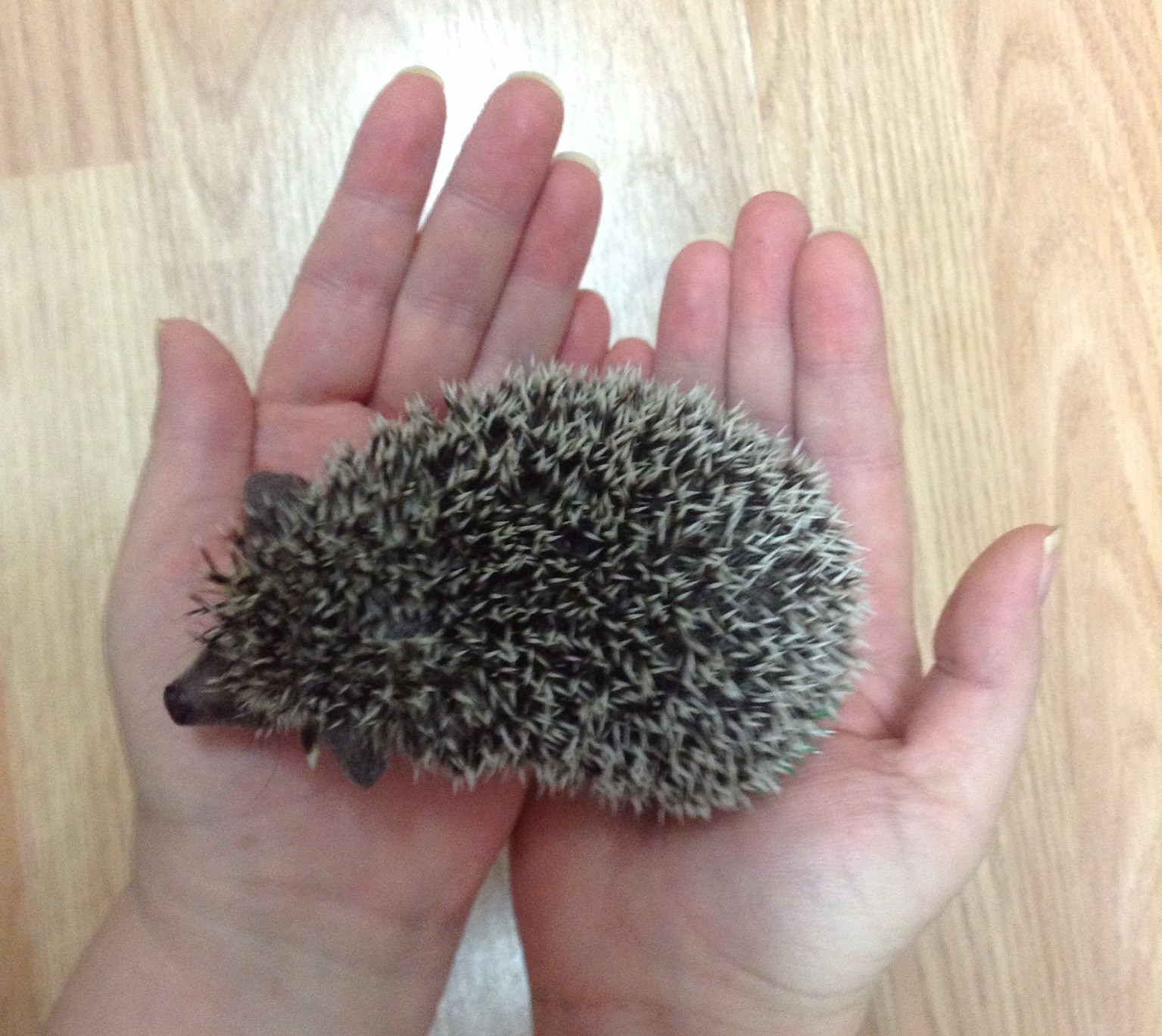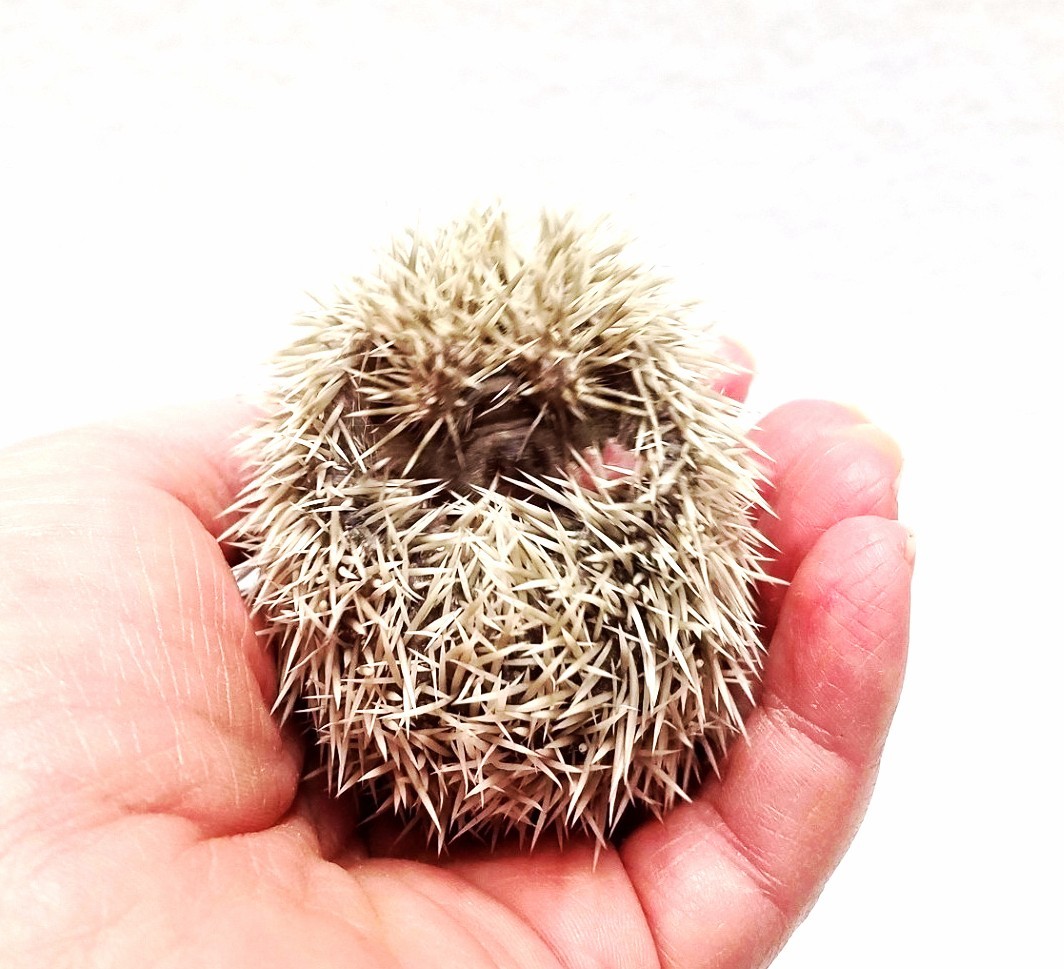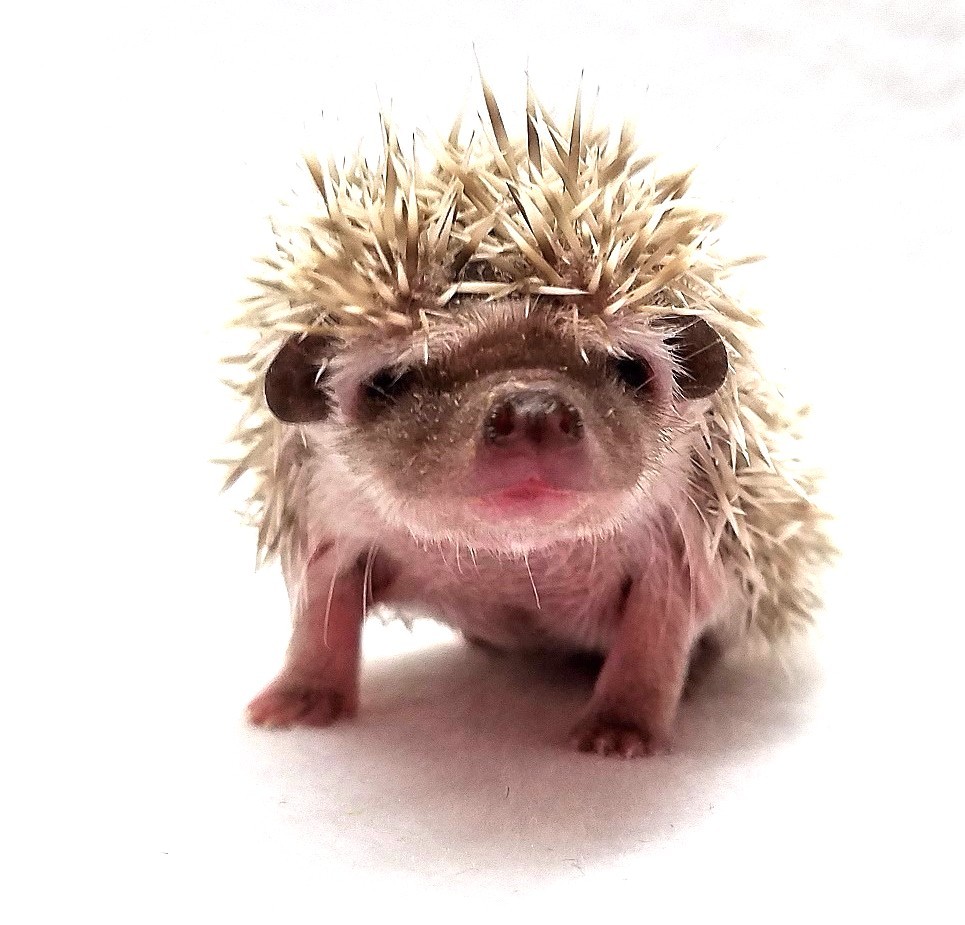Hedgehogs are fantastic pets! It is magical when they bond with you -not many small animals have this tendency! However, it is really important to know the bonding process doesn't happen overnight. Hedgehogs are not a domesticated animal. Hedgehogs were brought into the pet trade in the 1980s and are still a wild animal. A wild animal is a species that evolved in the wild. It has the physiology, mental capacity, and instincts best suited to the environment it evolved in. An individual wild animal can become tamed (conditioned to be more docile and submissive to humans), but domestication occurs not on one animal, but on a population of a species. Domestication of a species takes thousands of years.
Dr. W.J. Jordon from Care of the Wild International, conservation and care of wildlife charity describes the difference between domestication and taming a wild animal as follows:
Hedgehogs require a lot of patience while you tame and bond with your baby. Hedgies are shy and reluctant to interact with humans without effort on your part. This does not mean that you can’t bond with a hedgehog… you definitely can! It just takes a little bit of effort in the early stages to win your hedgehog's trust.
Since Hedgehogs in the wild are ground dwelling animals and are often preyed upon, they have strong instincts for protection. While taming and bonding with your hedgehog it is important to realize that instincts will often override any learned behavior. The less you set off their instinctual triggers the quicker your hedgehog will tame and bond with you. Understanding what your hedgehog is trying to tell you will help you teach your hedgehog that you are not going to eat him!

Picking up and Holding your Hedgehog
Most hedgehogs don’t like you reaching into their cage. When you remove the igloo or hiding spot from your hedgehog, you trigger its defensive instincts. Hedgehogs only have rods on their retinas for seeing light or dark. Over stimulation of these neurons by the light blinds and frightens your hedgehog. It’s kind of like when you are asleep and someone flips on the light in the middle of the night. It takes a few seconds for your eyes to adjust. Now imagine a sleeping hedgehog being exposed when the hiding space is lifted and can’t see what is coming! It is only natural for your hedgehog to roll right up in a ball, give a huff and try to poke you with its quills. No matter how social your hedgehog is, sometimes this instinctual behavior never goes way.
To pick up your hedgehog, scoop your hedgehog up by going in on the sides. Let your hedgehog adjust while you hold your hands flat. You will notice your hedgehog relax after a few moments.
Taming and bonding with your hedgehog is a little easier if you understand your hedgehog's behavior.

Tasting vs. Biting
Hedgehogs, especially babies explore their world with their sense of smell and taste. Some hedgehogs can be “tasters.” When a hedgehog nibbles you, we like to call this tasting rather than biting because they aren’t biting out of fear or aggression, but rather out of curiosity. If your hedgehog starts to lick you beware, it may taste you! Just move your hands around so it doesn’t zero in on a target and taste you!

Sniffing the Air
Hedgehogs have a papilla located behind the incisors and ducts which connect the oral cavity to the vomeronasal organ, a chemosensory organ located between the roof of the mouth and the palate. So, to get a better whiff of something you will see hedgehog sniffing and displaying their two front teeth. This behavior is called the flehmen response.
Hedgehogs really get to know their world by their sense of taste and smell! Keep this in mind when you bring your hedgehog home. A new home can be a time of sensory overload for a hedgehog. Be patient with your new hedgehog and let it explore. The more your hedgehog has been exposed to the scents and tastes, the quicker it will settle in and start to trust you.

Rolling into a Ball
When your hedgehog rolls into a ball he is displaying a defensive position. Many things can make your hedgehog roll up. Loud noises, unfamiliar smells, overhead motion, or sudden movement can trigger your hedgehog’s instincts to protect itself and roll up.
Tickling or petting your hedgehog quills can also trigger instinct to roll into a defensive position. The light touching of the quills can mimic a predator sniffing or checking out the hedgehog. Until your hedgehog trusts you, avoid these triggers and try not to lightly touch the quills on the back. If your hedgehog rolls up, continue to hold your hedgehog in a bonding bag or confidently with flat palms and away from your body.

Lowering the Visor Quills over the face
Many things will trigger your hedgehog’s instincts to take cover and pull their visor quills (the quills located on the forehead between their ears) over their face. Shadows overhead can look like a predator. Noises can startle a hedgehog. Sometimes just being uncertain of a new person can make a hedgehog start a game of peek-a- boo! Be patient, quiet and move slowly until your hedgehog becomes comfortable with you.

Quills Down Flat
When your hedgehog’s quills are lying flat and freely move with your hand (it feels like petting a broom rather than a pin cushion), your hedgehog is in a relaxed state. You should note that some babies won’t have completely flat quills until their adult quills come in.
Self-anointing
Self-anointing is when a hedgehog starts frothing at the mouth and uses its tongue to put large wads of saliva onto their quills. Sometimes they practically bend in half, flatten their visor quills, and close their eyes which make this behavior almost look involuntary! Have no worries, this is a completely normal behavior among many species.
The purpose of self-anointing isn’t understood, but for the hedgehog it seems to occur when the hedgehog smells something new. The hedgehog might even chew on the new substance and smear this on their quills too.
Hedgehogs will try and chew up their environment and spit it on their back.
Hedgehog Sounds
The most noticeable and frequent sound your hedgehog will make is the huffing or hissy noise. Like a dog barks and a cat meows, huffing and hissing is the sound a hedgehog makes. Usually when an animal hisses we expect the animal to strike, scratch or bite. Don’t be alarmed when you hear a hedgehog hiss because he is just trying to tell you something is going on and he is on alert. A hedgehog’s first line of defense is their quills so huffing or hissing is usually accompanied with just rolling into a ball or lowering the visor quills.
• It takes 2-4 weeks or hedgehogs to start feeling comfortable in their new home. When you first take your hedgehog home, 100% of holding should be where the hedgie can’t see you. Hedgehogs do not have gyrification in their brain which means they don't think or learn. Your job is to get familiar in its developing brain so it doesn't react to you as a stranger danger. The only way to get him familiar with your scent without reacting is by holding it without it seeing you. Animals that lack gyrification in their brain will relax when you take away the stimulus. To demonstrate what I am saying, burry the hedgehog's face into the corner of your bent arm. You should notice your hedgehog calms right down when its head buried. If your hedgie can't see you, then you must not be able to see them
• When you hold your hedgie exclusively in the bonding bag this can help cut down some of the tasting. Hedgehogs anoint by chewing up their environment and spit it onto their back. This does not exclude your hands. Scientists don't know why hedgehogs anoint, but the explanation I like the best is that they are trying to camouflage their scent with the scent of the new environment. So, we call biting "tasting" which should subside as your hedgehog becomes familiar with you. If you do get tasted, try not to react!
• Since hedgehogs are preyed upon by everything… don’t make predator moves on your hedgehog like petting it! You will be able to pet your hedgehog but not until he is familiar with you. Petting it is predator language for "I am going to eat you!" Ever seen a cat catch a mouse? The cat paws at the mouse before the kill. Pawing or petting will make your hedgehog react negatively to you. So, retrain your hand not to pet your new pet until your hedgie knows you better.